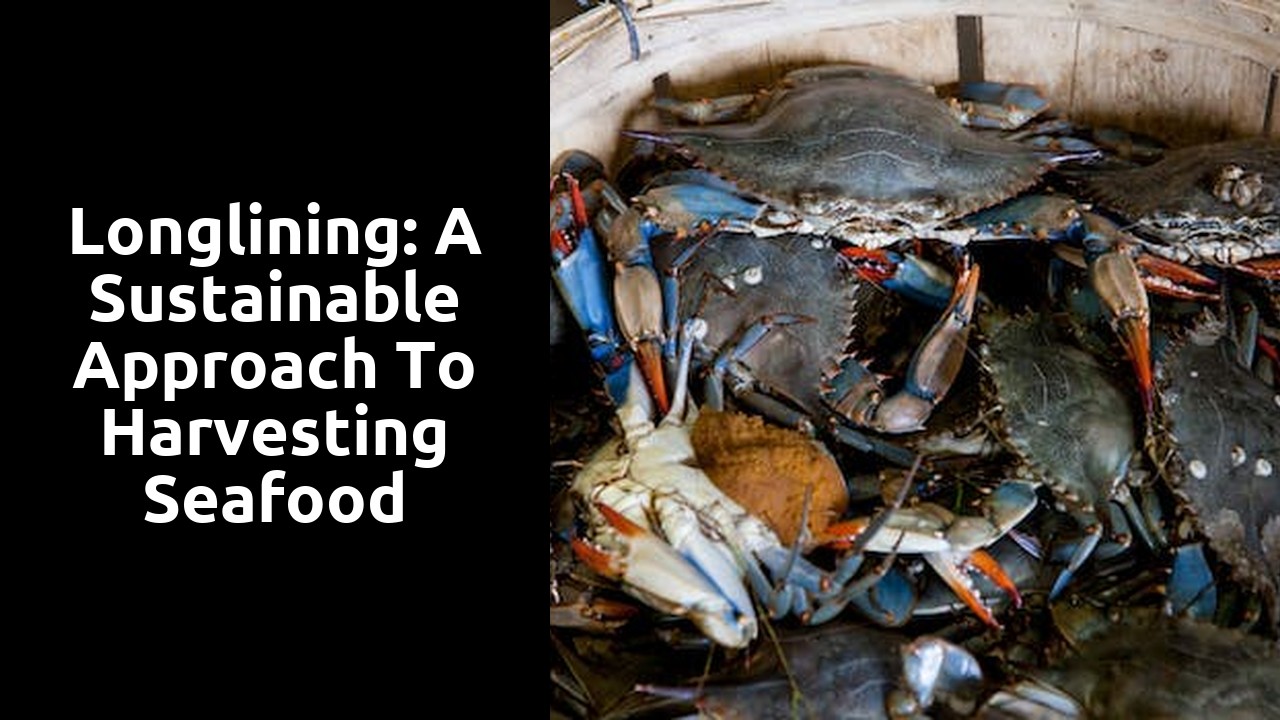Longlining: A Sustainable Approach to Harvesting Seafood

The Advantages of Sustainable Seafood Harvesting Techniques
Sustainable seafood harvesting techniques offer numerous advantages over traditional fishing methods. First and foremost, these techniques help in preserving the delicate balance of marine ecosystems. By using responsible fishing practices, such as practicing selective harvesting and avoiding overfishing, we can ensure the long-term viability of fish populations and protect the overall health of the marine environment.
Moreover, sustainable seafood harvesting techniques also promote the conservation of non-target species and habitats. By utilizing methods like longlining, which involves using a main fishing line with multiple baited hooks, fishermen can target specific fish species while minimizing the bycatch of other organisms. This reduces the unintentional capture of endangered or vulnerable species and preserves the biodiversity of the marine ecosystem. Additionally, these techniques help to reduce damage to essential habitats such as coral reefs or seafloor communities, further contributing to the overall sustainability of the fishing industry.
Exploring Alternative Methods in Seafood Procurement
Exploring Alternative Methods in Seafood Procurement
When it comes to seafood procurement, it is essential to explore alternative methods that not only ensure the availability of seafood but also promote sustainability. Traditional methods of fishing, such as trawling and seine fishing, have been criticized for their negative impact on the marine ecosystem. As a result, there has been a growing interest in adopting alternative methods that are less destructive and more environmentally friendly. These alternative methods require a shift in mindset, but they offer promising solutions for sustainable seafood procurement.
One such alternative method is aquaculture, also known as fish farming. Aquaculture involves the cultivation of fish and other seafood in controlled environments, such as tanks or ponds. This method allows for the production of seafood without putting additional pressure on wild fish stocks. By controlling the feed, water quality, and overall conditions, aquaculture can produce seafood in a more controlled and sustainable manner. However, it is crucial to ensure that aquaculture practices are carried out responsibly to avoid negative impacts on the environment, such as pollution or the spread of diseases to wild fish populations.
Understanding the Environmental Benefits of Responsible Fishing Practices
Responsible fishing practices play a vital role in preserving the delicate balance of our marine ecosystems. By adopting methods that prioritize sustainability, we can ensure the long-term health and abundance of our seafood resources. One such environmentally-friendly technique that has gained popularity in recent years is longlining.
Unlike other fishing methods that involve large nets or trawlers, longlining utilizes a series of baited hooks attached to a mainline that can stretch for miles. This method reduces the risk of bycatch, which refers to the unintentional capture of non-targeted species. By specifically targeting certain fish species, longlining minimizes the impact on untargeted marine life, allowing them to continue thriving in their natural habitats. Moreover, the use of baited hooks also helps to maintain the overall balance of the food chain, as predatory fish are more likely to be caught, preventing their potential negative impact on other species.
Innovations in Seafood Industry: Embracing Sustainable Harvesting
The seafood industry has been making strides in embracing sustainable harvesting practices as a way to ensure the future availability of our ocean's resources. One such innovation is the introduction of longlining, a fishing method that has gained recognition for its minimal impact on the marine ecosystem. Unlike traditional trawling techniques which can cause damage to the seafloor and result in high bycatch rates, longlining offers a more targeted and controlled approach to harvesting seafood.
Longlining involves the use of a main line, which is often several miles long, with smaller lines attached at intervals. These smaller lines, or branch lines, are equipped with baited hooks that attract the desired catch. This method allows fishermen to target specific species, minimizing the accidental capture of non-target species. Additionally, the use of circle hooks has been proven to reduce the mortality rate of bycatch, as they tend to hook fish in the corner of the mouth, making it easier to release them unharmed. This innovative approach not only promotes sustainable fishing, but also ensures a higher quality of seafood by reducing the stress placed on the caught fish.
Balancing Seafood Supply and Environmental Conservation Efforts
One of the greatest challenges facing the seafood industry is finding the delicate balance between meeting the demand for seafood and conserving the environment. As the global population continues to grow, so does the need for sustainable seafood sources. However, overfishing and destructive fishing practices have led to declining fish populations and harmed marine ecosystems.
To address this challenge, it is crucial to implement responsible fishing practices that promote long-term sustainability. This includes reducing bycatch, implementing catch limits, and protecting essential fish habitats. By doing so, we can maintain a healthy balance between seafood supply and environmental conservation efforts, ensuring that future generations can continue to enjoy the benefits of abundant marine life.
The Role of Longlining in Promoting Sustainable Seafood Consumption
The role of longlining in promoting sustainable seafood consumption cannot be overstated. Longlining is a fishing method that utilizes a main line, often several miles long, with multiple baited hooks attached. Unlike other fishing methods that indiscriminately catch large quantities of fish, longlining selectively targets specific species, greatly reducing bycatch and minimizing the negative impact on non-target species and their habitats.
One of the key advantages of longlining is its ability to target deep-sea species that are typically more abundant and resilient to fishing pressure. This not only helps to maintain healthy populations of these species but also allows for the replenishment of stocks in shallower waters over time. By focusing on sustainable fishing practices like longlining, we can ensure that future generations will be able to enjoy a diverse array of seafood options without depleting our oceans' resources.
Related Links
Longlining Safety Measures and Best PracticesEnvironmental Impact of Longlining: Challenges and Solutions
Longlining in Deep Waters: Benefits and Risks
Longlining Techniques for Maximum Efficiency and Catchability